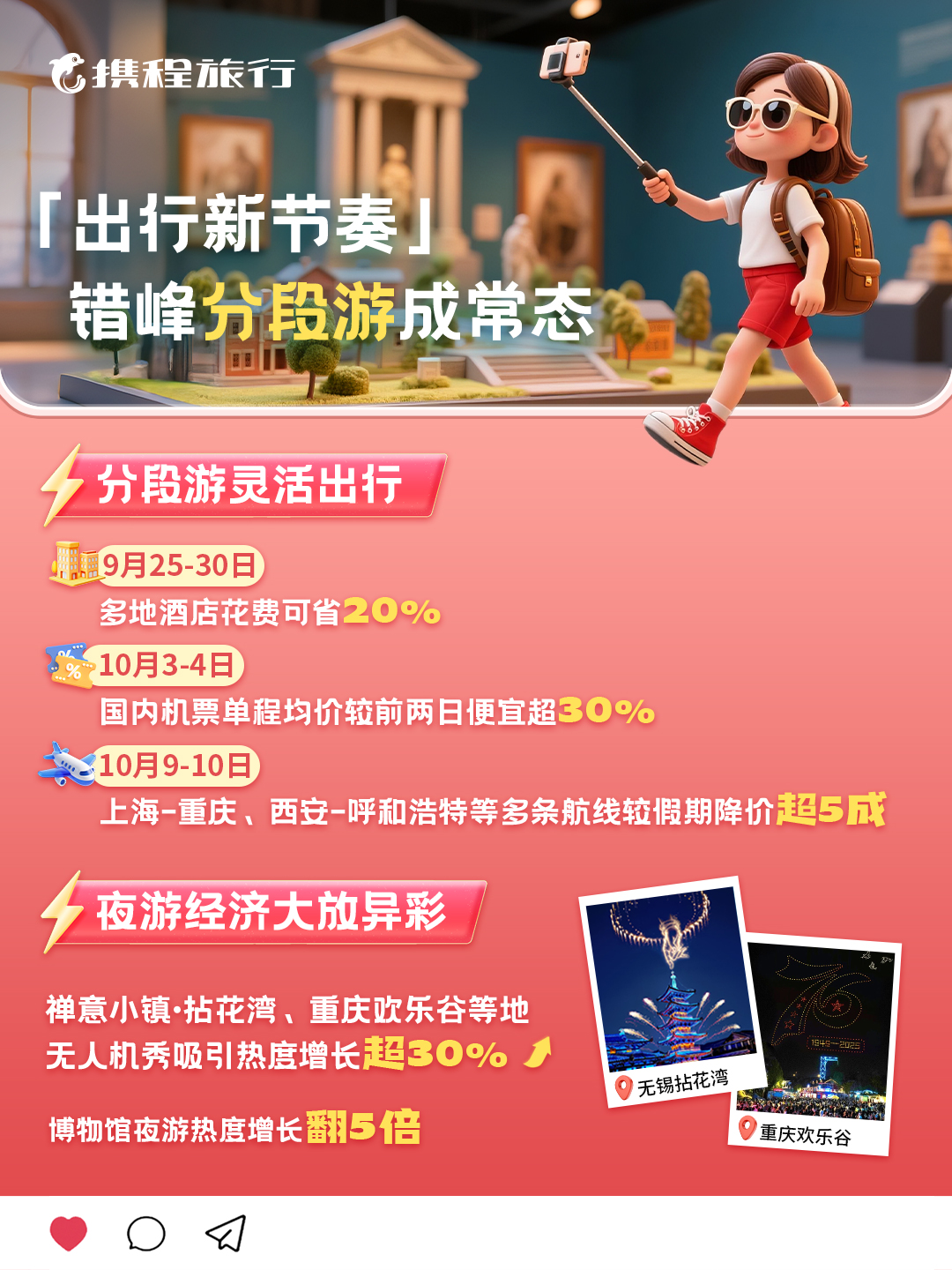The 8-day «super golden week» combining National Day and Mid-Autumn Festival has officially concluded. Long-distance travel and in-depth experiences became the main trends during this year’s holiday period. Domestic long-distance travel orders increased by 3 percentage points compared to last year, while international long-haul trips also gained significant popularity, with many European destinations seeing doubled bookings. In terms of destination choices, long-distance in-depth travel emerged as a clear trend. Beijing, Chengdu, Shanghai, Xi’an, Chongqing, Wuhan, Guangzhou, Qingdao, Nanjing, and Hangzhou ranked among the top 10 popular domestic long-distance travel destinations.
The growth in orders reflects travelers’ evolving understanding of travel’s meaning—moving from popular to niche destinations, from sightseeing to immersive experiences, and from planned itineraries to emotional expression. Chinese tourists’ consumption choices increasingly demonstrate the value recognition of «paying for emotions and experiences.»
New Travel Philosophy:
«Low-energy travel» rejects exhaustion, chauffeur-driven tours see order increase
During this holiday, «low-energy tourism»—abandoning packed schedules, rejecting exhaustion, and embracing low-consumption travel—remained one of the most notable phenomena. Another group of travelers, adhering to the philosophy of «saving more energy while seeing more scenery,» opted for chauffeur-driven tours.
Domestically, Beijing’s chauffeur-driven tour orders increased by 75% year-over-year during the holiday, while scenic areas like Sichuan’s Aba saw doubled orders. International chauffeur-driven tours showed even deeper trends, with overall orders growing over 120% year-over-year. Japan’s market total GMV increased by 180%, while Sri Lanka’s GMV rose over 300%. Replacing traditional «check-in» sightseeing were experiential activities like island cycling, intangible cultural heritage experiences, night performances, and urban mystery-solving check-ins. Travelers’ expectations for itineraries no longer focus solely on attractions but shift toward content and emotional fulfillment.
Additionally, cities like Urumqi, Hohhot, and Lhasa saw overall order increases approaching 30%. More travelers are choosing to explore the northwestern border regions and snowy plateaus, seeking pristine natural landscapes and rich cultural heritage. During the National Day and Mid-Autumn Festival holiday, travelers explored more deeply, with particularly strong growth in third-tier and lower cities. Many smaller cities gained popularity through their unique charm. Data shows Hubei’s Enshi saw chauffeur-driven tour orders triple, Shanxi’s Yuncheng orders increased by 57%, while Jingdezhen’s overall tourism orders grew nearly 40%, partly fueled by local internet fame.
New Travel Rhythm:
«Staggered» travel becomes normalized, post-holiday bookings rise in multiple locations
Data indicates that staggered peak-season travel remained popular this holiday, with many travelers using vacation days to depart early between September 25-30, or starting journeys during or even after the main holiday period.

Choosing off-peak travel not only enhanced the travel experience but also saved consumers significant costs. For example, domestic hotel expenses could be reduced by 20% during September 25-30. On October 3-4, domestic one-way flight prices were over 30% cheaper than the previous two days. Those choosing post-holiday travel could experience even more cost-effective and relaxed journeys. For October 9-10, routes like Shanghai-Chongqing and Xi’an-Hohhot saw prices drop over 50% compared to holiday rates. Currently, off-peak travel orders for October 9-10 show significant increases in many locations, with Shijiazhuang, Wuhan, and Xi’an seeing year-over-year growth of 100%, 68%, and 40% respectively.
The concentrated long-holiday travel model creates resource strain and cost increases, while «staggered» off-peak travel serves as a rational choice that can effectively alleviate industry pressure during peak periods, optimize resource allocation, and address travelers’ pain points.
New Holiday Faces:
Japan and Thailand lead outbound travel, foreign visitors experience Mid-Autumn





